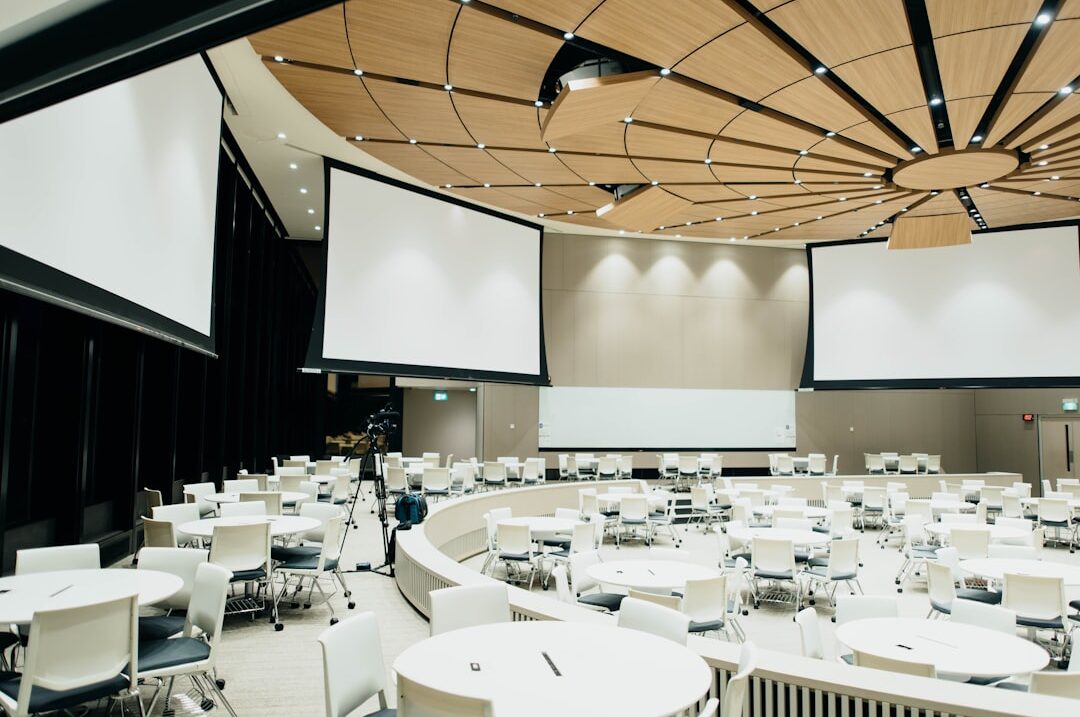Corporate Communications Interview Questions 2025: Master Internal & External Messaging


Practice unlimited interviews and get instant, AI-powered feedback on Huru.ai. Start for free—build confidence, sharpen your messaging, and land your dream role!
Navigating the Digital Storm: Why Corporate Communication Interviews Are Evolving in 2025
The corporate communications landscape is rapidly transforming. AI-driven analytics, hybrid workplaces, and the fragmentation of digital channels mean communicators must be more agile and strategic than ever. In 2025, interviewers expect candidates to be comfortable with change, data, and innovation—while still mastering the fundamentals of clear, trustworthy messaging both inside and outside the organization.
Why such high stakes? Because today’s communicators are reputation guardians, employee advocates, and digital engagement experts—all at once. The interview process now tests not just what you say, but how you listen, adapt, and measure impact. Let’s dive into what sets top candidates apart this year.
The Interview Landscape: What Top Companies Are Really Asking
Today’s interviews go far beyond “Tell me about yourself” or “What are your strengths?” Here’s where you’ll face scenario-based, results-driven questions. Prepare to demonstrate strategic thinking, cross-functional collaboration, and real-world impact.
- How have you developed and deployed a communications strategy for both internal and external audiences?
- What’s your approach to measuring the effectiveness of your campaigns? (e.g., eNPS, sentiment analysis)
- Describe a time you managed a crisis—what steps did you take?
- How do you ensure communications are inclusive and accessible?
- Which tools or platforms do you use for engagement analytics?
- How do you foster employee engagement in a hybrid or remote workforce?
- Describe a conflict you resolved between departments regarding messaging.
- How do you tailor messaging for different stakeholder groups?
- What’s your process for building media relationships in a digital-first era?
- How do you respond to negative feedback or public criticism?
- Explain how you use data to iterate and improve communications.
- What ethical dilemmas have you faced in corporate communications?
- How do you manage real-time messaging during a fast-moving event?
Inside the Boardroom: Mastering Internal Messaging
Internal communication isn’t just about memos and meetings. In 2025, it’s about cultivating connection, clarity, and culture across distributed teams—often using a blend of AI and personal touch. Here’s how you’ll be tested:
| Traditional Tactic | 2025 Upgrade |
|---|---|
| Quarterly town halls | Weekly pulse surveys & AI-powered sentiment analysis |
| Email blasts | Interactive intranets & targeted microlearning modules |
| Executive memos | Video messages & live Q&A sessions |
| Annual engagement surveys | Real-time feedback tools & gamified recognition apps |
- Show how you’ve managed internal comms during mergers, crises, or major changes.
- Discuss your experience fostering psychological safety and open feedback.
- Highlight your use of new tech—AI dashboards, employee advocacy tools, etc.

On the Front Lines: Excelling at External Messaging
External communication is about reputation, reach, and rapid response. In 2025, interviewers want proof that you can handle crises, manage stakeholder expectations, and harness new digital tools:
- Develop a crisis playbook with templates for rapid, transparent updates.
- Leverage real-time social listening tools to identify trends and risks as they happen.
- Partner with influencers and leverage AR/VR for immersive storytelling.
- Measure campaign ROI using share of voice, digital sentiment, and engagement metrics.
- Maintain message consistency across channels—press releases, social media, and investor updates must align.
The Hybrid Communicator: Blending Internal and External Strategies
Companies now expect communicators to harmonize messaging across every audience. Internal news impacts external perception, and vice versa. Here’s how to show synergy in your interview:
- Audit all messaging channels regularly for alignment.
- Train all spokespeople on key narratives and core values.
- Use integrated dashboards to monitor engagement across audiences.
- Share examples of projects where you’ve driven coordinated internal and external campaigns.
Beyond the Script: Creative & Crisis-Readiness Interview Questions
You’ll face questions that test your real-time judgment, composure, and ethics. Here’s a Q&A table to help you shine in the unexpected:
| Sample Question | Ideal Response Tips | What Interviewers Assess |
|---|---|---|
| Describe a time you had to convey a difficult message to employees during a merger. | Use STAR (Situation, Task, Action, Result). Emphasize transparency and empathy. | Crisis composure, clarity, emotional intelligence. |
| How would you respond if a senior leader’s memo contradicted the company’s external stance? | Highlight fact-checking and internal alignment before external updates. | Ethical judgment, initiative, tact. |
| How do you prepare for communication in a rapidly escalating crisis? | Discuss pre-approved templates and rapid coordination with legal/PR. | Crisis readiness, proactive planning. |
The Analytics Advantage: Proving Your Impact
Organizations expect data-driven communicators who can link messaging to business goals. In your interview, be ready to discuss these essential metrics:
- Employee Net Promoter Score (eNPS): Tracks workforce engagement and satisfaction.
- Share of Voice: Compares your brand’s visibility against competitors across channels.
- Sentiment Analysis: Uses AI to gauge tone and audience mood in real-time.
- Engagement Rates: Measures interactions for both internal and external campaigns.
- Conversion Rates: Tracks how messaging drives business actions (sales, sign-ups, etc.).
For the ultimate edge, mention how you use A/B testing, automated dashboards, and regular reporting to senior leadership. Pro tip: Practice describing your analytics process using real stories from past roles.
The Candidate’s Toolkit: Essential Skills and Continuous Learning
To thrive in corporate communications, you’ll need a dynamic skillset:
- Strategic thinking & adaptability
- Crisis communication and rapid decision-making
- Stakeholder empathy and inclusivity
- Digital tool mastery (AI analytics, content scheduling, etc.)
- Leadership in distributed and hybrid teams
Continuous learning is non-negotiable:
- Join groups like IABC or PRSA for networking and certifications
- Subscribe to newsletters (PR Daily, Ragan Communications, etc.)
- Practice with Huru’s AI-powered interview platform
💡 Key Takeaway
To ace your corporate communications interview in 2025, focus on real-world impact, measurable results, ethical integrity, and your ability to thrive in a digital-first, hybrid environment. Let your stories show not just what you’ve done, but how you can lead messaging into the future!
Watch: Communications Specialist Interview Questions & Answers for 2025
See expert answers to tough interview questions, tips for 2025, and learn how to communicate your value with clarity and confidence:
Appendix: Quick-Reference Cheat Sheets
- Interview Question Bank: Categorized, printable list of 50+ questions. Print this post or copy into your notes for rapid review!
- Metrics Cheat Sheet: eNPS, share of voice, crisis comms KPIs—memorize the definitions and uses above.
- Crisis Scenario Template: Use STAR format, always close with measurable outcomes and lessons learned.
Elias Oconnor is a senior content writer at Huru.ai, specializing in career growth and interview mastery content for ambitious job seekers. He is passionate about empowering candidates to shine in fast-changing industries through practical, actionable advice.


 Jul 04,2024
Jul 04,2024  By Elias Oconnor
By Elias Oconnor